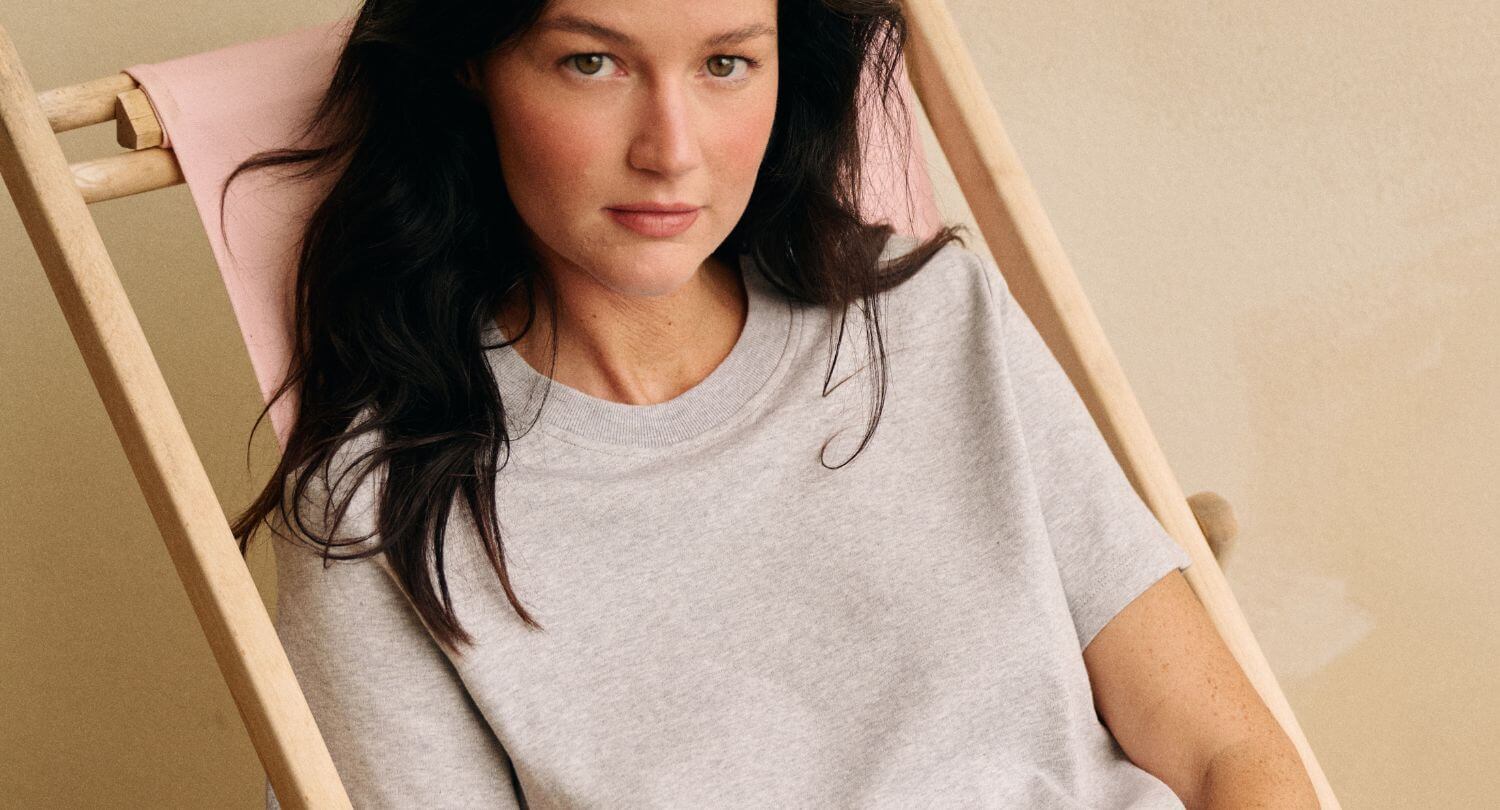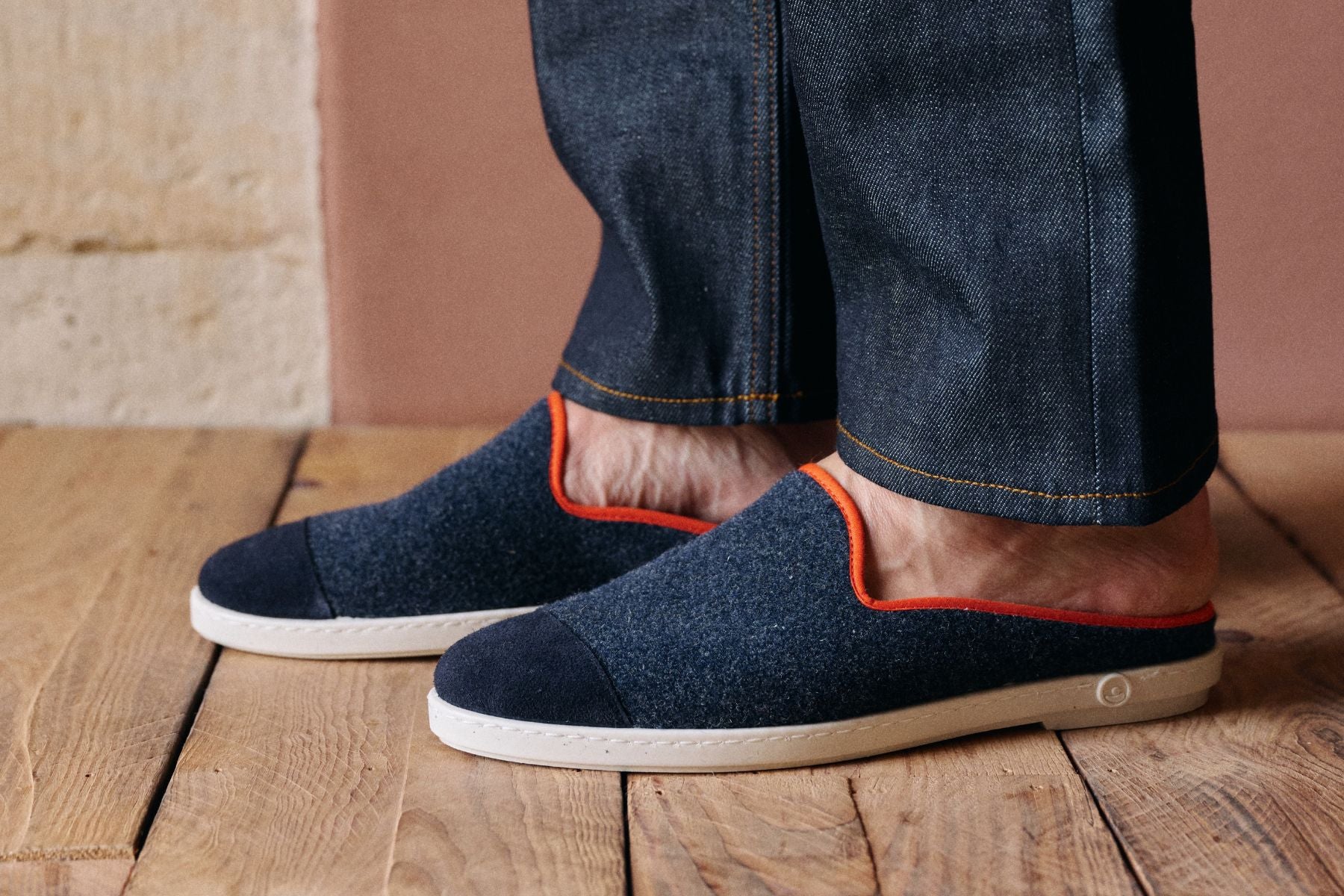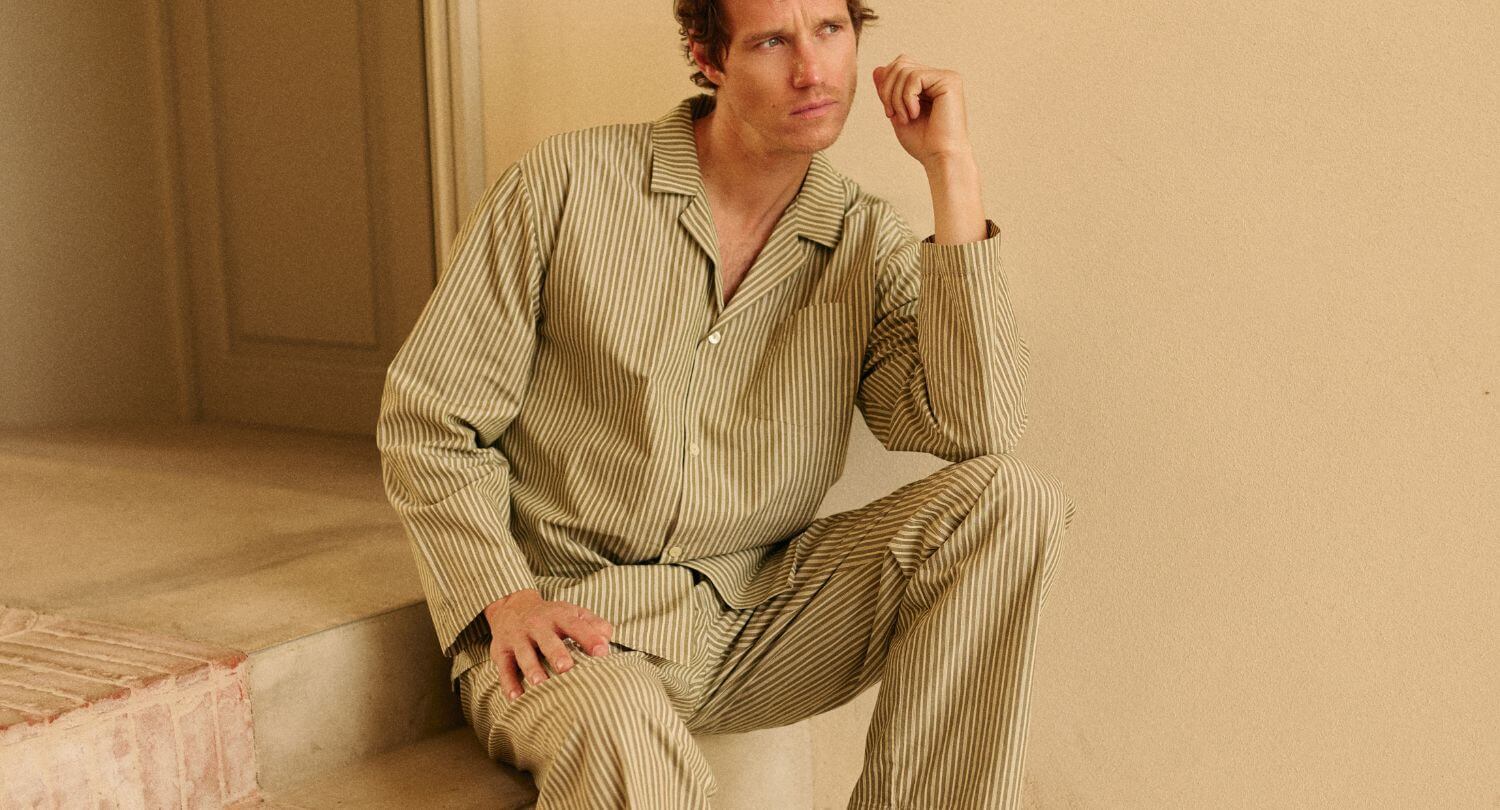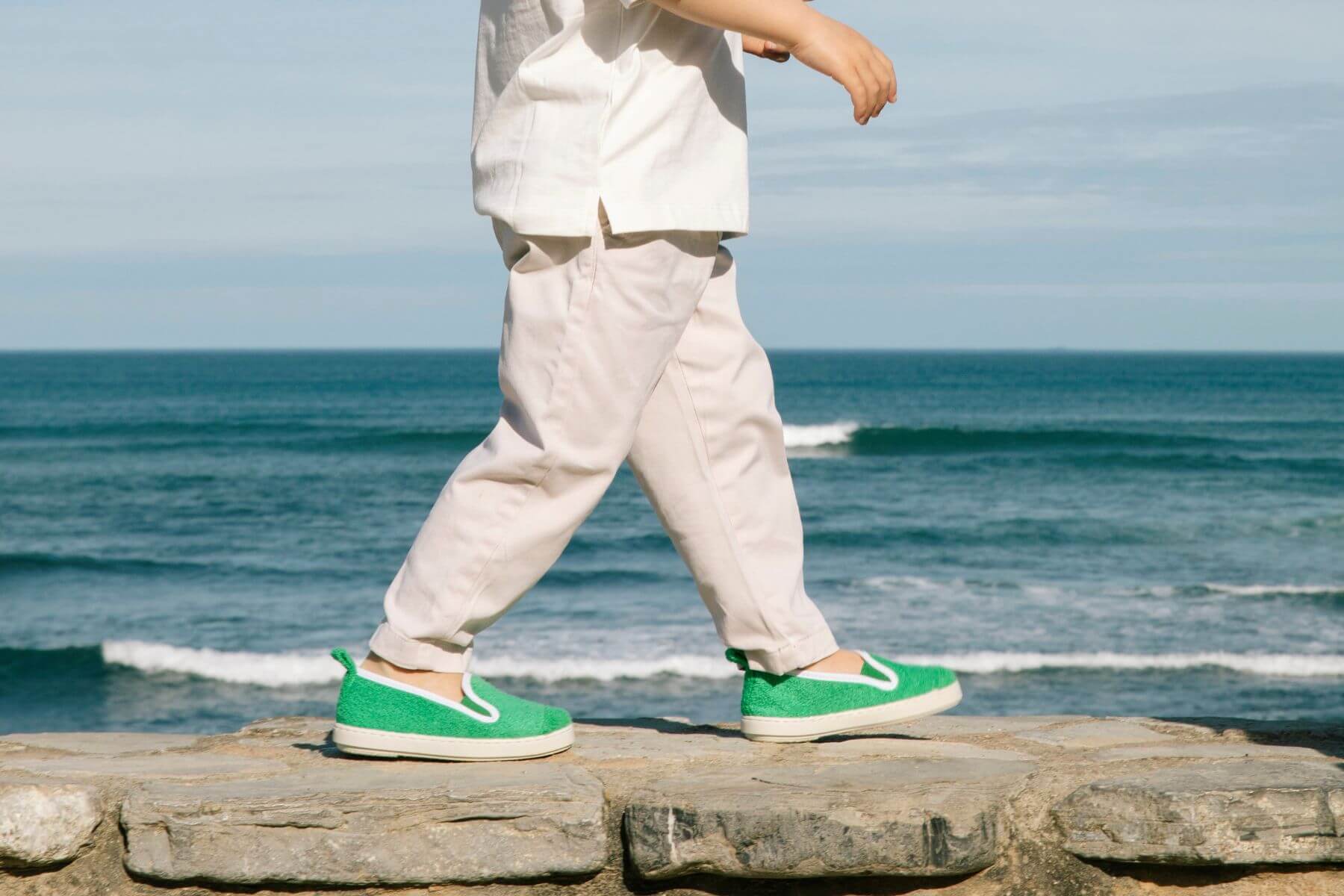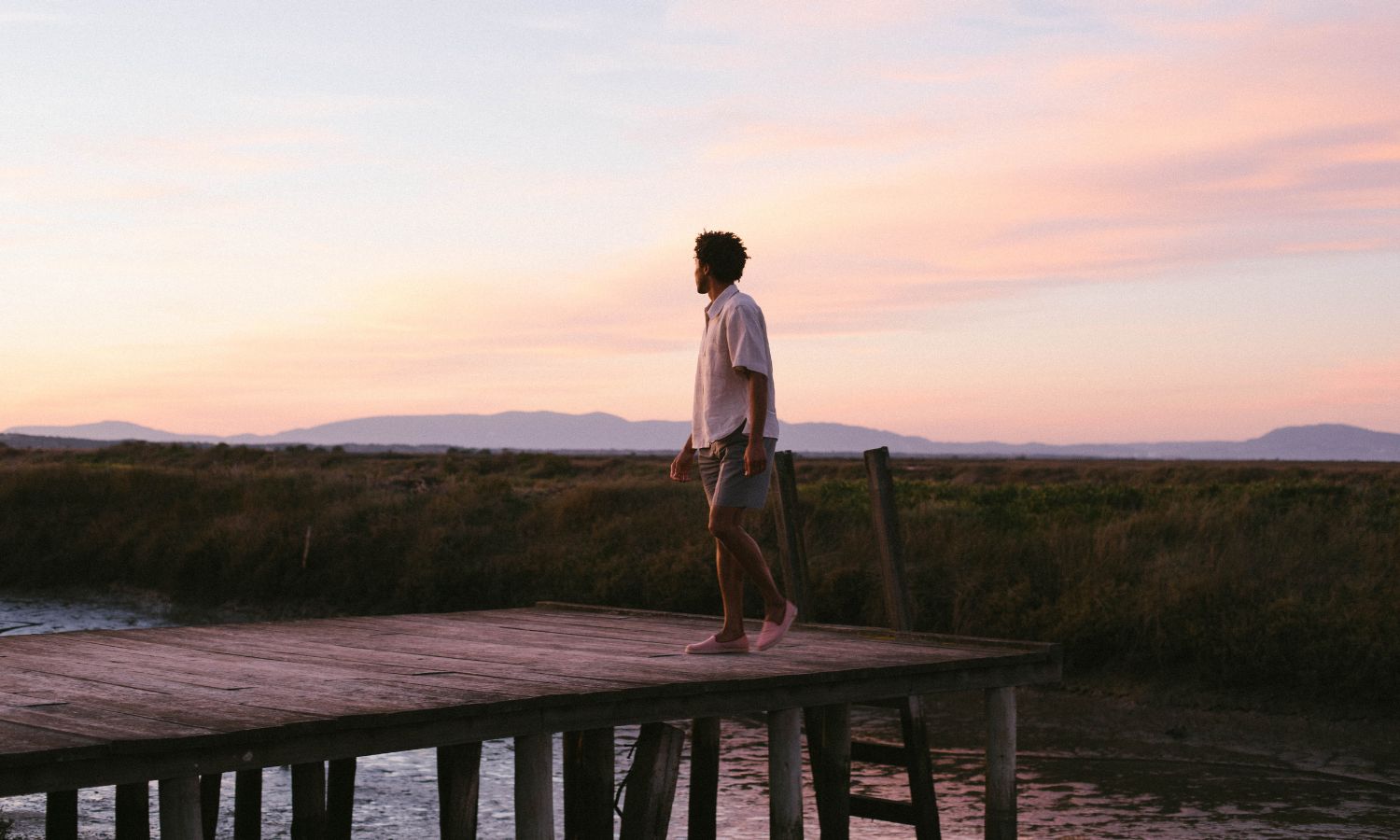Every year, Europeans throw away 4 million tonnes of clothing. The vast majority of them end up in landfill or are incinerated. However, the fashion industry is already the second most polluting industry. It generates 1.2 billion tonnes of greenhouse gases every year.
Clothes are polluting to manufacture, and they have a very short lifespan in our closets. To counter this polluting trend, slow fashion brands, but also independent designers and individuals, have launched into upcycling. At Angarde, the leather of our sneakers is made from plant waste such as pineapple leaves or grape marc! Unused pineapple leaves and grape marc are collected and transformed to enhance your shoes.
Belts made from used tires, skirts from fabric scraps, old shirts that become pretty pajamas... Upcycling allows you to create new clothes in an original way. We suggest you come back to this trend.
But, what is upcycling?
Upcycling, called surcyclage in French, corresponds to the revaluation of a product or a material to give it a new use. This phenomenon is recycling from above. With traditional recycling, technicians use an industrial process that recovers reusable materials. In the end, the product obtained may be less qualitative than the first. With upcycling, the goal is to improve the quality of the final product.
The first to use this term was the German interior designer Reiner Pilz, who insisted on the qualitative contribution of upcycling.
The growing interest in upcycling is especially visible among young people. 31% of young French people have already purchased at least one upcycled product, and this figure tends to increase.
Brands practicing upcycling highlight the model of thoughtful consumption. Angarde is part of this approach. We sell our products without pushing for overconsumption. The goal is to offer you a sustainable and reasonable purchase, a product that you will use with pleasure for years!

In fact, it is a practice that has existed for a long time in many developing countries. Due to lack of means, the poorest populations have often modified objects to use them in another way.
Why should we turn to upcycling?
The advantages of upcycling are numerous. First of all, for consumers, it is an alternative to fast fashion and all the negative impacts it causes (pollution, indecent working conditions, excessive water consumption, etc.)!
Upcycling adds a new cycle to the life of products. It fights against waste, particularly clothing waste, and limits the creation of new waste. It's good for the planet !
Upcycling is part of a circular economy approach. This concept uses waste or objects that are intended to become waste to create new pieces. Waste is avoided and the producer of the new object does not need to look for new raw materials. By avoiding this entire production process, the manufacturer saves energy. On the environmental side, an entire polluting manufacturing stage is avoided!
In addition, upcycling allows the creation of original, and sometimes even unique, pieces.
Where to get upcycling parts?
More and more brands are getting involved in upcycling, either by specializing in this concept, or by creating at least some of their pieces using this process. Designers have also taken up the subject and have no shortage of ideas for giving new life to any type of object. And, on the Internet, it is possible to see videos and tutorials for upcycling certain objects from home.
In France, Maison Alfa, Maison Cléo, Paris REmade, Refunk, Les Récupérables, Fantôme and La Vie est Belt are among the leaders in upcycling.
Marine Serre
The designer Marine Serre is one of the references in the field. For her spring-summer 2022 collection, she created a “ Fichu pour Fichu ” collection in which she uses tablecloths and tea towels to make new clothing items . Before that, the designer had already used old gymnastics balls to make bags.
The Ghost House
The Ghost House uses old bicycle inner tubes to make bags. La Vie est Belt creates new accessories and belts from used bicycle tires and fire hoses. Other brands use scraps of fabric from other brands or old clothes for their creation.
And of course, you can get sneakers with upcycled materials at Angarde! To make our sneakers vegan, we decided to turn to “leather” made from grape marc, cactus and upcycled pineapple. It's simple, grape marc and pineapple leaves are not used in agriculture or viticulture. Growing cacti requires no water or pesticides. Once transformed, we obtain aesthetic, durable and easy-to-maintain sneakers.
Upcycling can also be done at home!
On the Internet, sites and content creators have specialized in upcycling. On the one hand, they sell their productions, and on the other, they offer tutorials and DIY (Do It Yourself) so that amateurs can upcycle themselves with what they find at home.
Upcycling can be done from any object and to create any other object! The possibilities are numerous. The most important thing is to have imagination.
Did you know ? : Upcycling does not only concern the fashion sector
It is a process that is used in the textile sector, but not only! Many creative fields use their imagination to upcycle old objects that have become useless.
This is the case of the French company Bâtho. To give a second life to old boats, the startup transforms them into pleasant new housing.
Even the food sector knows its upcycling references. In 2018, the company Résurrection was born. She makes aperitif cakes from malt residue. And, the startup Rubies in the Rubble creates condiments with fruits and vegetables that are too “imperfect” for mass distribution.
As for decoration, you can beautify your interiors with objects from Septembres and La Tête dans les neiges. The latter creates beanbags from advertising tarpaulins and hot air balloons. For the company Septembres, these are candles, glasses and lamps which are made from empty wine bottles.











